Pasta Water Cooking Method for Making Rice Lower in Arsenic
- How you can lower the arsenic content of rice by cooking rice in a lot of water…similar to how you would for pasta. This can lower arsenic by up to 60%.
- Why even though rinsing your rice lowers the nutrition content, the risk reduction from arsenic is more important than losing some iron and B vitamins. Nutrient retention is higher with brown rice because the nutrients are inside whole grain brown rice and not sprayed on like we find with enriched white rice foods.
- What types of rice to look for and where to source your Basmati rice from for the lowest arsenice levels
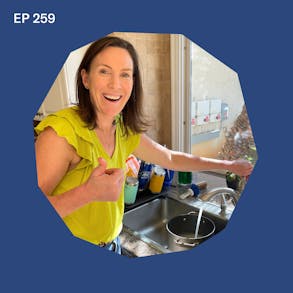
LISTEN TO THIS EPISODE
Episode Description
If your family eats rice, you can modify the cooking method to help lower arsenic. In this episode we look at the pasta water cooking method for making rice lower in arsenic. By cooking your rice in a lot of water you can reduce arsenic without compromising too much other nutrition, particularly if you’re doing brown rice.
Links from This Episode
- Healthy Babies Bright Futures’ report “Is Homemade Baby Food Better?” is located here. Download their two-page parent tip sheet with advice on arsenic foods not to feed babies here.
- Baby-Led Weaning with Katie Ferraro program with the 100 First Foods™ Daily Meal Plan, join here: https://babyledweaning.co/program
- Baby-Led Weaning for Beginners free online workshop with 100 First Foods™ list to all attendees, register here: https://babyledweaning.co/baby-led-weaning-for-beginners
Other Episodes Related to this Topic
Podcast episodes covering the topic of heavy metals in baby foods you might want to check out include:
- Episode 246 - Arsenic in Baby Food with Charlotte Brody, RN and Jane Houlihan
- Episode 160 - Why White Rice Cereal Should Not Be Your Baby's First Food with Alan Greene, MD
- Episode 208 - Heavy Metals in Baby Food with @consumerreports James E. Rogers, PhD
- Episode 232 - Tuna Talk: Is it Safe for Babies to Eat Canned Tuna with @consumerreports Michael K. Hansen, PhD

Latest Episodes
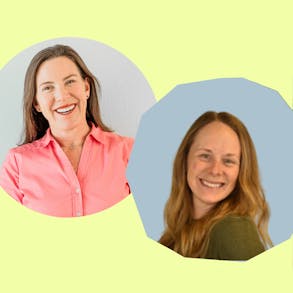
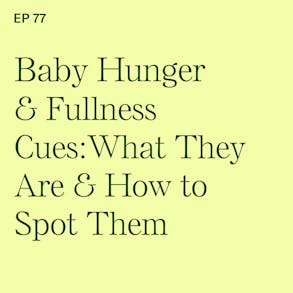
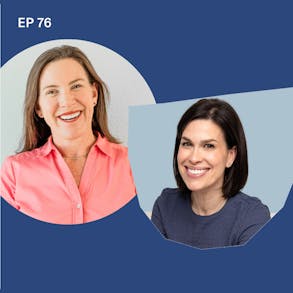
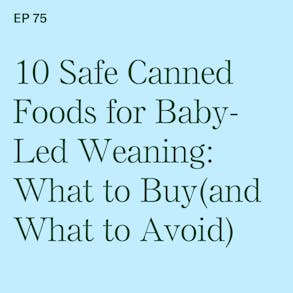
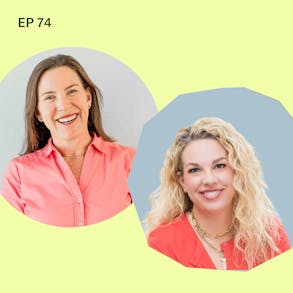
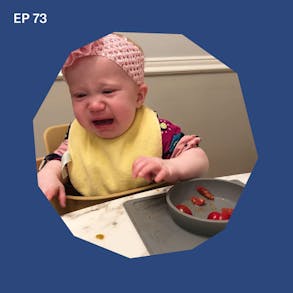
Katie Ferraro (0s):
All right. Quick pulse check. Are you feeling okay about baby Led Weaning a little nervous about this transition? Are you maybe interested in BLW but not entirely sure if this is the approach for you or maybe you started baby Led weaning, but you're feeling stuck or you're going to give up because you're not sure if you're doing this right. Don't give up. I have a brand new one hour comprehensive online video training for you called Baby Led Weaning for BEGINNERS. It's totally free. And I think it's going to ease a lot of anxiety for you. I just redid this free training. Its packed with videos and visuals on how to safely prepare BLW Foods and what the first few days looks like and how to reduce choking risk. Plus everyone on this free workshop gets a copy of my 100 FIRST FOODS LIST.
Katie Ferraro (41s):
So you'll never run out of ideas about what to feed your baby. Next. You can get signed up for this weeks. Video workshop times at baby LED WEANING dot co. If you've got one hour to dedicate to learning about BLW, this is the training for you. babyledweaning.co has this week's workshop times and don't forget you also get that a hundred FIRST FOODS LIST from this free training. And I hope to see you there. And since we've been talking more about using this Pasta Water Cooking Method for reducing rice, some parents have been like, well Katie, but in addition to producing Arsenic pony, it also be removing the iron. And the reality is with even brown rice in particular, we see only about a 10% reduction in iron from this method. Hey there I'm Katie Ferraro, Registered Dietitian college nutrition professor and mom of seven specializing in baby LED WEANING here on the baby Led Weaning Made Easy podcast.
Katie Ferraro (1m 26s):
I help you strip out all of the noise and nonsense about feeding, feeding you with the competence and knowledge. You need to give your baby a safe start to solid foods and using baby LED WEANING. Hello, welcome back today. We're talking about the Pasta Water Cooking Method for Making Rice Lower in Arsenic. Now, if you've been following the podcast for any length of time, we have been talking a lot more lately about Arsenic and Heavy Metals in Baby foods, but in particular in rice foods. So while the topic that we're going to talk about today and the actual methodology for helping in your own home kitchen to lower Arsenic risk and toxicity levels in the foods that you offer your baby, that's actually nothing really new.
Katie Ferraro (2m 10s):
Some of the papers that we're looking at today. Date back from 2005, 2006, you might have noticed an uptick in your feed about Arsenic in rice and in the lay media and a news. And a lot of this had to do with a recent report that was published by healthy babies, bright futures about whether or not making your own baby food is safer than buying it. So I recently had Charlotte Brody and Jane Houlihan from healthy babies, bright future, their nonprofit dedicated to reducing the risk of Heavy Metals via the foods that babies eat. They were on the podcast in episode 2 46, talking about their new report, talking about this very specific topic of Arsenic in Baby Food.
Katie Ferraro (2m 51s):
And they gave some very actionable items that was episode 246 Arsenic in Baby Food with Charlotte Brody and Jane Houlihan. And a lot of you guys wrote to me after I saw a lot of comments in social media and emails saying, wait, they talked about how you can cook the rice in a lot of water to reduce arsenic, but Katie, how do you actually do that? It kind of sounded more theoretical than me practical. So when I've been working on, in my own home kitchen for both my family and I recently did rice with one of the babies that I was working with was experimenting with this actual method to see, you know, what are the final results? Cause I had some families write to me and be like, Hey, I'm from an Asian family, no way, is this method going to fly? It was actually a lot of Asian families that said, this sounds cool, but like it would not fly in my family.
Katie Ferraro (3m 32s):
And so I said, try it out and see if you think that the final result is worth the trade off in. As you'll see today, what's ultimately the potential to reduce arsenic by up to 60% by adopting this cooking method. So this is a relatively short podcast episode, but it's going to be about how to actually make the rice lower in Arsenic. But if you're interested in learning more about this concept of wait, whoa, hold up. I didn't even realize that rice foods are putting my baby at risk. Go back and listen to episode 2 46. Again, that's Arsenic in Baby Food and that's what Charlotte and Jane from healthy babies, bright future. But I also had Dr. Alan Green on a while ago in episode one 60, he's the pediatrician responsible for the white out movement. It's a movement to help other pediatricians and parents and caregivers stop recommending iron-fortified white rice cereal as baby's first food.
Katie Ferraro (4m 17s):
It is not an ideal first food for many different reasons, including the fact that we know that rice as a crop, it preferentially takes up arsenic at much higher levels than any other crop. So episode one 60 was called Why White Rice Cereal Should Not Be Your baby's first food. And then we also had, we've had over the last couple of months, a number of different scientists from consumer reports on, but in episode 208, their head scientists, Dr. Jamesy Rogers came on to talk about this overarching topic of Heavy Metals in Baby foods. So again, this is not intended to scare you, but just to hopefully stay top of mind, no matter where you pop into the podcast, I hope you are being aware of the fact that there are certain foods and in particular rice foods that we know have higher levels of arsenic that can be problematic and are problematic for babies because arsenic is as a heavy metal it's neurotoxic it's nefrotoxic, it's something that we definitely want to avoid for our babies.
Katie Ferraro (5m 7s):
So now to the actual methodology of how to make the Pasta, Water Cooking Method work for rice. So when I was speaking with Jane and Charlotte, they mentioned that cooking your rice in a method similar to, as you would do, pasta can dramatically reduce arsenic levels in rice. And they cited a statistic that that can reduce arsenic levels by up to 60% like, wow, okay. Sometimes, you know, you would change something pretty dramatically and there's only a slight risk reduction. This is a, I don't know, depending on how passionate you are about rice cooking methods, not that dramatic of a change in order to have a very dramatic outcome. You think about the way you traditionally would cook rice? Right? Usually with a ratio. I know for me, I'm always like, depending on what rice I have and I look on my phone, I can't remember what the ratio is.
Katie Ferraro (5m 48s):
If I'm doing an instant Potter, I'm on the stove top, but let's say, you know, boss, Marty rice, we do a lot in our family and I'm always like, shoot, is it two to one water to, or is it 2.25? What's the ideal ratio, but you cook it in a smaller quantity of water. Right. And the notion being that the rice absorbs the water. Okay. And then it fluffs up and then it's done. And then you take it off the stove top or out of the instant pot or a rice cooker. What have you with that particular method? What happens is the Arsenic that is in the rice when you cook it in the water that it's put in the boat with it leaches some of the arsenic back out into the water, but then because the water is absorbed back into the final cooked product, it then reabsorbs that Arsenic, the notion being with the Pasta, Water, Cooking Method, think about how you boil pasta in a lot of water, right? And then you strain that Pasta Water off the notion with the rises.
Katie Ferraro (6m 31s):
If you can cook in a lot of water and let it boil in that, and then strain the cooking water off that you're essentially removing the water that had all of ours and it's not all of it, but most of it, and then the remaining product would have significantly less Arsenic. So normally you would cook your rice in maybe a two to one ratio or 1.75, depending upon how, again, finicky you are, but with the Pasta Water, rice cooking method, if you look at some of the data, they're talking about cooking in levels of six parts, water to one part rice, okay. So if you are cooking, you know, one cup of rice, then six cups of water. Okay. And as far as the numbers go, this has been shown with long grain polished rice.
Katie Ferraro (7m 13s):
Okay. That reduces the arsenic by about 40%. Okay. If it's parboiled rice, which has been pretreated and already partially boiled the six to one ratio can reduce the arsenic by about 60%. And then we're talking about brown rice cooking in six parts, water to one part. Rice can reduce the arsenic levels by about 50%. Okay. Now there's also the question of what hold up. When you're cooking in lots of water, we know that the longer you cook foods in water, the greater, the potential there is to leach out other nutrients, right? The bad stuff, like the heavy metals like arsenic, but also what about the good stuff? Rice actually does contain some vitamins and some minerals and some iron. Okay. Now, when it comes to the white rice, the enriched white rice, that's a product that because through the refining process, so much of the nutrition has been removed in the United States by mandate.
Katie Ferraro (8m 0s):
The manufacturer actually has to add back in, they spray the white rice with all sorts of extra nutrition it's sprayed on. So when you rinse the white rice, a lot of the other nutrients are removed. Okay. So it's not that rinsing white rice, the enriched white rice. Okay. Removes most of those sprayed on vitamins and minerals, about 77% of the Foley. These are the B-vitamins 57% of the thiamine, 54% of the niacin. Okay. That's on the white rice, but with brown rice, because those nutrients are not sprayed on. Okay. They're actually inside of the whole grain brown rice. There's almost no effect on vitamin loss when you do this cooking method. Okay. And so some parents have said to me, well, wait a minute.
Katie Ferraro (8m 41s):
Yeah, you're reducing the arsenic by up to 60% when you cook at six to one, and then it goes even a little bit higher when you cook in 10 parts water to one part rice. So if you really don't mind, you might as well just cook it more water. If you can. Their concern was, well, are you going to be losing all the other nutritious benefits of rice? And at the end of the day, rice is not a very nutrient dense food. It's energy dense meaning provides a lot of calories per small amount of food. But as far as like a wide variety of nutrition, even with brown rice, yeah. There's some B vitamins in there. There's some iron in there, but at the end of the day, even if we think with a brown rice, it's thought that the iron only gets reduced by about 10%. The takeaway message here is that the primary source of iron in your baby's diet should not be coming from brown rice. Okay. If you are serving those rice foods, we want you to always take precaution with your baby safety first.
Katie Ferraro (9m 24s):
So I think if you have to kind of triage here, what we're looking at, we're more concerned about reducing baby's exposure, risk, arsenic, cooking, a lot of water. And if you're doing brown rice, it only reduces the iron by about 10%. That's really not a huge deal, right? Because remember you're offering baby a variety of different foods, including If your family eats animal foods, animal foods that contain iron or different plant foods that contain iron. And those would be better sources of iron to begin with than rice. So yes, the trade-off is you might lose a little bit of iron, but the benefit there is that you're reducing the potential for Arsenic toxicity in the arsenic levels by up to 60%. Okay. So as far as how this has played out in the kitchen, I've been doing it a lot with long grain rice with bus Mati.
Katie Ferraro (10m 5s):
And then one of the tips that was actually in that episode with Jane and Charlotte was talking about where you select your boss Monte from. And I haven't had a ton of time to look more into this, but their suggestions are choosing basmati rice from California, from India, from Pakistan, and then actually avoiding BAS naughty rice grown in the south and the Southeast part of the United States because of the variations in soil levels. There's higher levels of arsenic in the soil and that part of the country. So I had just been kind of paying a little bit more attention to the actual package of basmati rice that I have. Oh, it's made in India. Oh, it's made in Pakistan. And I haven't, even though I live in California, ironically, been able to find post-money made in California, but I can't say I've been looking that hard. I've been looking at what I already have in my cabinet, but I have found the cookie in the 10 to one ratio at first.
Katie Ferraro (10m 48s):
I was like, this is so weird. This is never going to work, but I've done it probably 10 times now. And honestly, if you drain it off all the way and drain the rice off. Cause the grossest thing, I think if you like soggy rice to me is so gross. I like nice dry fluffy rice, but you definitely can get that. You just need to add in a little bit of time to the cooking in order that you need to allow the rice to totally drain. Okay. So I've been actually draining it and then putting it out on a towel and then patting it dry or just making rice a day ahead and then popping it in the refrigerator. And that kind of dries it out a little bit. I did try, it was even running short a little bit of time when I was making this, these rice cakes for the baby Braden, who I was cooking for recently. And I ran the rice through my salad. Spinner never really works out that great cause like the holes in the salesmen are kind of too big and the rice falls through it, but I have one type of salad spinner that has a pretty fine mesh and even spitting it in the salad spinner kind of dried the rice out pretty quickly.
Katie Ferraro (11m 38s):
So if you don't mind waiting a little bit longer to actually drive the finished product out, I think it's totally worth the trade-off, which is the potential to reduce your baby's Arsenic in the rice levels. By up to 60%. Now the caveat here is we don't want to be offering baby rice foods every day. Okay. Rice is, if your family eats it, if it's part of your food culture, that's wonderful, but there's really no food we should be offering to baby every single day. Especially if we're working to help baby achieve diet diversity pain, that's offering a variety of foods. And if on occasion, a rice food is involved and you're making the rice from scratch this Pasta Water Cooking Method. And I recommend going as high as 10 parts water to one part rice, if you can. Okay. The potential to reduce the arsenic by 60%, I think it's really, really worth it to be able to incorporate rice.
Katie Ferraro (12m 22s):
I think it does work with a variety of different rices. I've tried it with the shorter grain rice. I think we did Cal rose or sushi rice the other day, the texture was a little bit different for sure. Like I think like a rice connoisseur would be like, oh my gosh, this does not taste exactly. As I thought it would. I thought it would make it really gummy. But again, if you build in time and spread it out to let it dry out, really, I think the texture result, it's almost not noticeable. And again, if it's a brown rice product, you can be reducing arsenic by 50%. If it's white rice up to 60%, again, I think that's definitely worth it. So if you guys are making rice for your baby, as one of the starchy foods, I have rice listed actually on my a hundred FIRST FOODS LIST under the starchy foods category. I think it is a method worth exploring. Let me know how it works out for you guys.
Katie Ferraro (13m 4s):
And when you are finished with rice and you're looking for other starchy foods, there's 19 other starchy foods in the starchy foods category and putting lots of different whole grains. So brown rice is a whole grain refined white rice is not, but you can make your babies so many different types of starchy foods, including whole food, whole grains, rather that you don't need to be focusing exclusively on rice. If you want to grab a copy of that a hundred FIRST FOODS LIST, I give it away to everybody on my free one hour online video training called baby LED WEANING FOR BEGINNERS, you can sign up for this week's workshop times and grab your copy of the a hundred FIRST FOODS LIST that has rice as well as 19 other starchy foods in this starchy foods, category, and lots of other ideas about high iron foods besides rice, because the reality is at the end of the day, rice should not be your baby's primary source of iron.
Katie Ferraro (13m 46s):
All of that is on the workshop. You can sign up at baby led, weaning.com. I'll also link up all of the references and resources related to the reduction in Arsenic and other nutrient numbers that I cited in today's episode. And some of the other episodes that are related to heavy metals and baby foods, that'll all be in the show notes for this episode. Would you confined@blwpodcast.com forward slash 2, 5, 9? Thanks so much for listening. I'll see you next time.
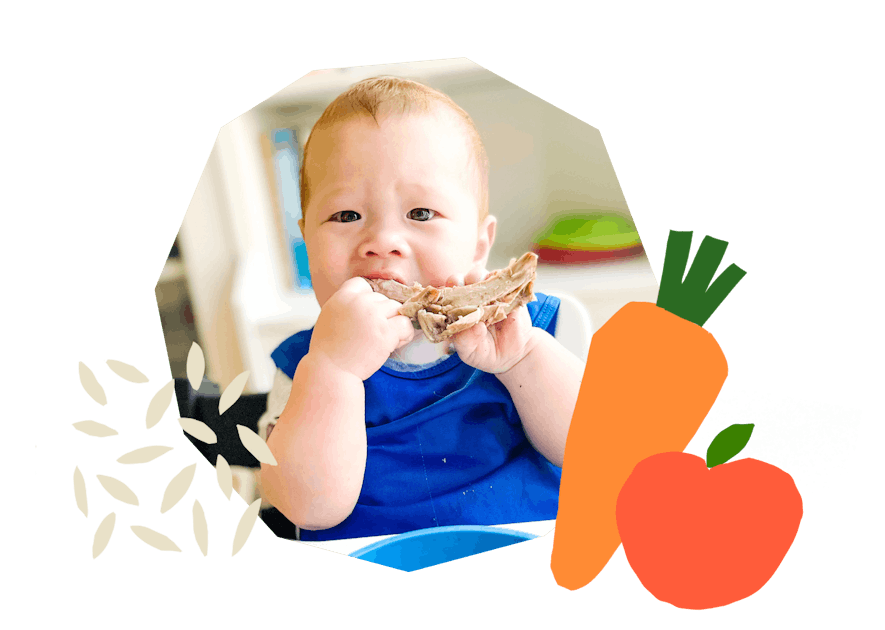
The Program Baby-Led Weaning with Katie Ferraro
A step-by-step digital program for starting solid foods safely and navigating the original 100 FIRST FOODS™ meal plan with baby-led weaning.
 EXPERT-LED, PROVEN APPROACH TO EATING REAL FOOD
EXPERT-LED, PROVEN APPROACH TO EATING REAL FOOD CONCISE VIDEO TRAININGS TO MASTER BABY-LED WEANING
CONCISE VIDEO TRAININGS TO MASTER BABY-LED WEANING 100 FIRST FOODS DAILY MEAL PLAN WITH FOOD PREP VIDEOS
100 FIRST FOODS DAILY MEAL PLAN WITH FOOD PREP VIDEOS
Baby-Led Weaning for Beginners Free Workshop
Is your baby ready to start solid foods, but you’re not sure where to start? Get ready to give your baby a solid foundation to a lifetime of loving real food…even if you’re feeling overwhelmed or confused about this next stage of infant feeding.
Get baby-led weaning recipes and tips delivered to your email inbox.

